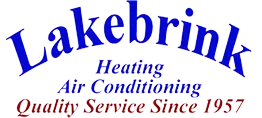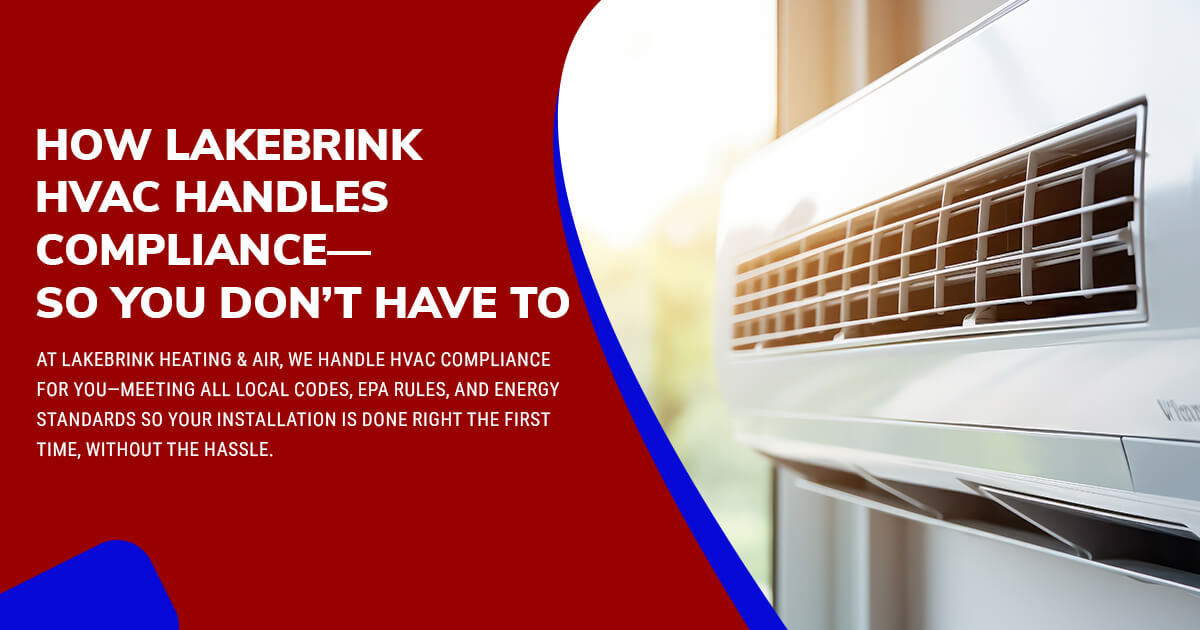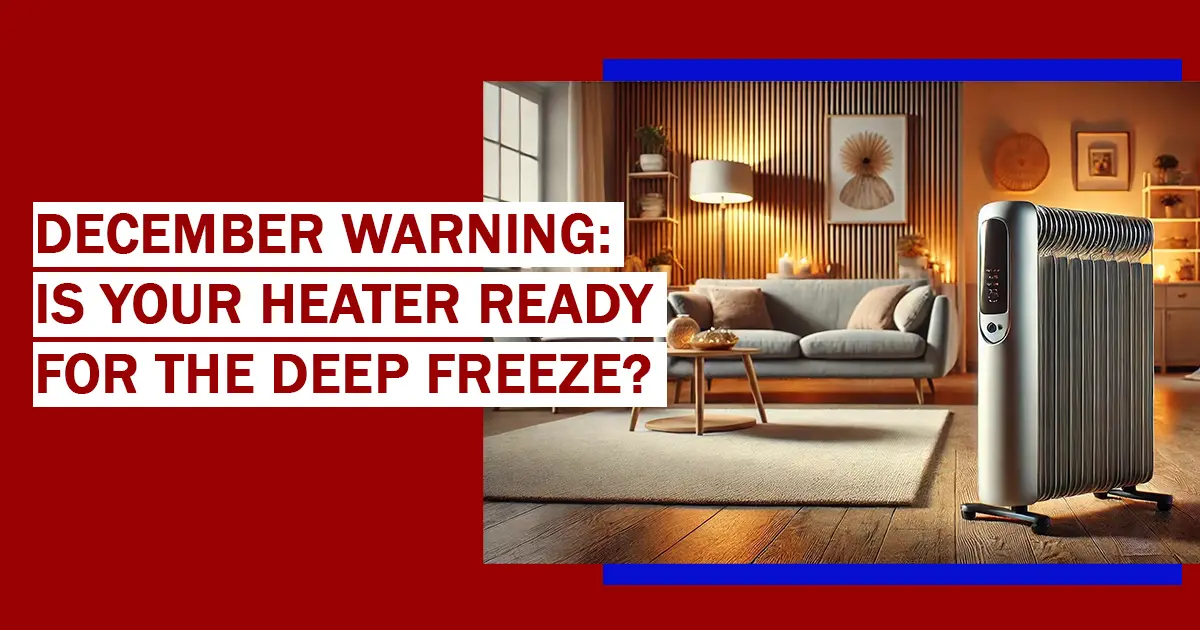Regulatory Compliance in Home Heating: How Lakebrink Guarantees Hassle-Free HVAC Installations and Peace of Mind
Why Regulatory Compliance for Home Heating Matters Now More Than Ever
Imagine investing in a new heating system, only to receive a notice that your installation violates updated local energy regulations—resulting in costly fines, required adjustments, or even legal complications. Homeowners across the
country face a rapidly shifting environment of energy codes and efficiency standards. In fact, recent surveys reveal a steady increase in local and national HVAC regulation changes each year, with new mandates affecting both system
design and installation practices. This growing complexity brings real consequences. Non-compliant systems can trigger anything from steep penalties to insurance issues or a reduction in property resale value.
These shifting requirements aren’t just legal formalities. They safeguard energy efficiency, environmental protection, and household safety. For any homeowner, keeping up with evolving codes, certifications, and paperwork can be as
exhausting as it is confusing. Many don’t realize how quickly regulations can change, nor do they anticipate how costly it can be to fall behind. The result? Stress, frustration, and unnecessary expenses—especially when the comfort
and safety of the people living in the home are at stake.
The Complex Landscape of Residential HVAC Regulations Explained
Common Compliance Challenges Homeowners Face
Home heating regulations are far from simple. While energy savings and public safety are critical goals, the rules that support these aims can become a maze for homeowners.
Deciphering Evolving Efficiency Standards
Most heating systems are now subject to rigorous efficiency ratings, from SEER and HSPF numbers to ENERGY STAR requirements. Each rating carries its own benchmarks for performance, directly influencing which systems qualify for
installation in your area. Regulatory updates often introduce tighter minimums, raising difficulties for those with older equipment or those exploring an upgrade. Homeowners who don’t understand these numbers may select systems that
can’t be installed legally, forcing expensive rectifications or replacements.
Understanding Permit and Inspection Requirements
Installing a new heating system isn’t just a technical challenge—it’s a regulatory process. From initial permits to final zoning inspections, homeowners must navigate layers of documentation to ensure every piece of equipment, from
the furnace to the ductwork, meets current standards. Knowing what paperwork to file and how to pass inspections isn’t always obvious. Miss a single step, and you risk failed inspections, project delays, or even mandated removal of
non-compliant installations.
Adapting to Local Building Codes and Zoning Laws
Regulatory differences between regions can be substantial. An HVAC system that meets requirements in one city might fail to do so a few miles away. Local building codes often include zoning restrictions, noise limits, and even
site-specific installation criteria. Because these standards are updated to reflect environmental concerns and new technologies, compliance often feels like a moving target. Homeowners regularly discover that their intended project,
though technically advanced, runs afoul of municipal ordinances.
How Non-Compliance Impacts Homeowners Financially and Practically
When heating systems don’t meet code, the consequences extend far beyond bureaucratic headaches. Fines for non-compliance can run hundreds or thousands of dollars, especially when code violations create safety hazards or
environmental risks. Some homeowners are forced to shoulder remediation costs, covering everything from reinstallation to retrofits, all at their own expense. In worst-case scenarios, a non-compliant heating system may void
homeowners’ insurance coverage or discourage potential buyers, reducing property marketability.
Beyond finances, non-compliance also means lost comfort, longer project timelines, and ongoing stress. If your installation is halted by a failed inspection, your family could face days or weeks without properly regulated
heating—something especially problematic in extreme weather. And since regulatory agencies keep detailed records, one mistake can haunt a property’s history for years to come.
Real-Life Scenarios: Fines, Insurance Issues, Remediation Mandates
It’s not uncommon for homeowners to receive a compliance notice following a routine insurance inspection, prompting a scramble to rectify deficiencies before policy renewal. Others discover during the home selling process that their
existing system—installed legally years ago—no longer meets updated codes, requiring costly last-minute upgrades. These experiences highlight the very real risk of waiting to address regulatory changes until it’s too late.
Why Compliance is About More than Avoiding Fines—Protecting Home Value and Family Comfort
Ensuring a home heating system is compliant isn’t just about staying on the right side of regulations. Proper compliance means your system is built and maintained for peak safety, energy efficiency, and reliability. Over the
lifetime of a system, these factors help protect your home’s value, minimize your carbon footprint, reduce monthly bills, and ensure continuous family comfort. The peace of mind that comes from knowing your heating is future-proofed
cannot be overstated.
How to Solve HVAC Compliance Challenges: Homeowner’s Step-by-Step Strategy
1. Audit Your Current Heating System for Regulatory Compliance
No matter how new or well-maintained your HVAC system may appear, regulations evolve. Begin by conducting a detailed audit of your heating system against all current local, state, and federal codes. Many homeowners start by asking
for documentation from their last installation or by requesting a compliance review from a professional.
Checklist: What to Evaluate Before Making Any Upgrade
- Confirm SEER, HSPF, and ENERGY STAR ratings for each major component
- Check the date and type of last major service or installation (systems pre-dating recent code changes may require upgrades)
- Compile all permits, inspection records, and manufacturer warranties for your equipment
- Analyze ventilation pathways, refrigerant use, and shutoff systems for code compliance
- Review requirements for local permit renewals or re-inspections if modifications are planned
2. Research Local and National Energy Standards
With regulations changing frequently, even the most diligent homeowners can struggle to keep up. Begin with your city or county building office website—many publish the latest boiler, heat pump, and furnace requirements. Larger
states often provide comprehensive online resources listing adopted efficiency standards. Compare these to Department of Energy and EPA national benchmarks to ensure your planned installation meets every applicable regulation.
While the information is public, translating legal jargon into actionable requirements can be daunting. This is where working with knowledgeable partners who regularly track updates becomes invaluable.
3. The Importance of Expert Guidance and Professional Installation
Even the most capable homeowners benefit from expert guidance. HVAC professionals interpret regulations, identify compliant equipment, and know how to complete each step of the permitting process. Reputable installers will not
proceed without filing all necessary paperwork and ensuring their designs meet or exceed required benchmarks.
Why DIY Approaches Often Fall Short
Many enthusiastic homeowners have tried to skirt the permitting process to save time or money, only to find themselves facing stop-work orders or failed inspections. Complex requirements for electrical connections, refrigerant
management, and combustion venting demand both technical expertise and up-to-date code knowledge.
4. Best Practices for Seamless HVAC Compliance
- Partner with service providers who rigorously track regulatory updates
- Insist on transparent documentation before, during, and after installation
- Request post-installation audits to confirm compliance
- Schedule periodic maintenance aligned with evolving standards
Using these best practices minimizes legal and safety risks, and extends the life and efficiency of your HVAC system.
Lakebrink: Your Partner for Stress-Free, Fully Compliant HVAC Installations
How Lakebrink’s Proven Process Ensures Regulatory Compliance
Expert Site Assessment and Up-to-Date Knowledge of Local Codes
Lakebrink stands apart through a methodical approach grounded in local expertise. Each project begins with a thorough site assessment, where code-specific requirements are identified. Lakebrink’s team monitors regulatory changes to
ensure all new system installations reflect the latest standards.
Comprehensive Documentation and Permitting Support
Homeowners benefit from clear, complete documentation at every step. Lakebrink manages all permits and inspection scheduling, ensuring that nothing is missed. Throughout installation, compliance is checked and verified to prevent
costly surprises later.
Installation By Certified Professionals
Certified technicians handle every aspect of the process. Their experience translates into fewer installation errors, faster approvals from authorities, and a significantly reduced risk of non-compliance penalties. Homeowners
experience timely, efficient projects with minimal disruption.
Compliance as a Guarantee: What Sets Lakebrink Apart
Regulatory-Compliant HVAC Systems for Peace of Mind
The focus on compliance isn’t just an added feature—it’s a guarantee. Lakebrink installations are completed to the most current energy codes and local standards, ensuring the system is built right the first time.
Ongoing Maintenance Packages to Stay Ahead of Rule Changes
Regulations can change during the life of your heating system. Lakebrink offers ongoing maintenance packages, designed not only to enhance system performance but also to flag emerging compliance needs. These packages reduce the risk
of future violations and unexpected expenses.
Transparent Communication Throughout Every Step
From the initial quote to the final inspection, Lakebrink emphasizes clear, honest communication. Homeowners receive updates as regulations change, practical advice on documentation, and an easy-to-follow record of all compliance
actions taken on their behalf.
What To Do Next: Secure Compliance and Comfort with Confidence
Use Lakebrink’s Proven Checklist to Assess Your HVAC Compliance
Start with a detailed self-assessment. Review every heating system component, gather documentation, and compare system attributes to current codes. Tools and checklists provided by trusted partners like Lakebrink help homeowners
pinpoint issues before they escalate.
Book a Lakebrink Compliance Audit – What to Expect from Your First Visit
A compliance audit with Lakebrink offers homeowners clarity and direction. Certified professionals inspect existing installations, highlight areas of concern, and provide a practical roadmap for achieving compliance—if improvements
are needed, they explain each recommended step. There is no guesswork, only informed confidence.
Frequently Asked Questions About Regulatory Compliance and Home Heating
FAQ
How often do HVAC regulations change?
Regulations for home heating systems often change in response to technological advances or energy policy updates. Homeowners should check for code updates annually, especially when planning upgrades or system replacements.
What is the most common reason for failed HVAC inspections?
Unpermitted modifications, use of non-compliant equipment, and outdated documentation are frequent causes of failed inspections. Working with certified professionals significantly reduces these risks.
Can I upgrade my home heating system without a permit?
Most localities require permits and inspections for system upgrades. Failure to obtain proper permits can lead to fines and may require rework or removal of new equipment.
How do Lakebrink’s maintenance packages help with compliance?
Maintenance packages are tailored to align with updated regulations and often include regular compliance checks. This helps homeowners stay current, avoiding last-minute surprises when rules change.
Is compliance necessary if my system was installed legally years ago?
If codes have changed since your system was installed, selling or upgrading the home may trigger new compliance requirements. Proactively reviewing compliance keeps you prepared for any property transaction or system upgrade
scenario.
Moving Forward: How to Maintain Long-Term Compliance as Codes Evolve
Staying compliant is an ongoing responsibility. Track relevant updates from your local building authority, consult professionals regularly, and plan periodic audits. Maintenance arrangements with specialists like Lakebrink ensure
your system is always up to code—protecting your investment for the long haul.
Conclusion: Don’t Let Hidden Regulations Threaten Your Comfort or Wallet
Summary of Top Compliance Risks and Lakebrink’s Solutions
Regulatory compliance in home heating isn’t a mere bureaucratic hurdle—it’s a critical component of your family’s safety, comfort, and financial security. Navigating changing codes, permits, and standards is confusing and
time-consuming, but neglecting compliance exposes homeowners to real risks. The cost of violations, system replacements, and unnecessary stress far outweighs the investment in a compliant installation.
Lakebrink’s focus on expert assessments, thorough documentation, and ongoing support takes the uncertainty out of regulatory compliance. Align your next installation or upgrade with current codes to ensure lasting performance,
safety, and peace of mind.
Ready for Compliance Without the Stress? Request Your Expert HVAC Assessment with Lakebrink Today!
Your next step is clear. Contact Lakebrink to schedule a compliance audit or use their homeowner checklist to review your current setup. By acting now, you’ll avoid costly surprises and guarantee your heating system is compliant,
efficient, and built to last.





